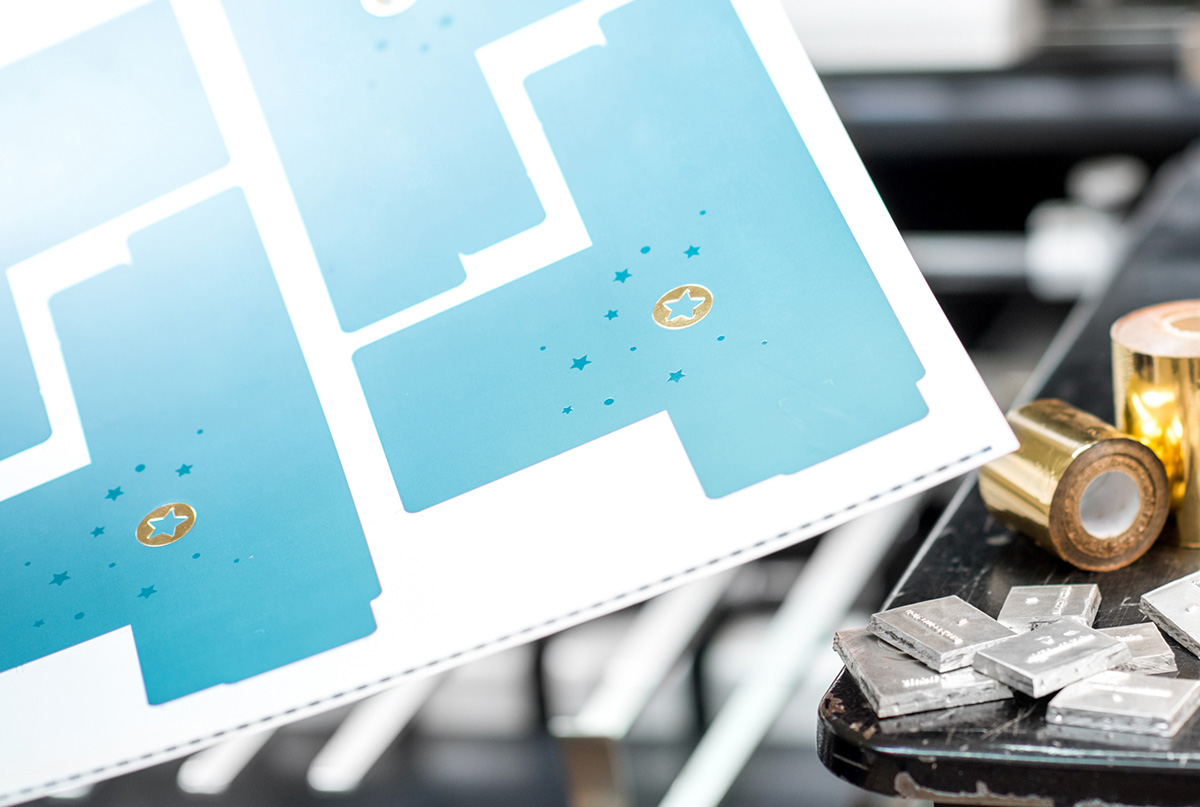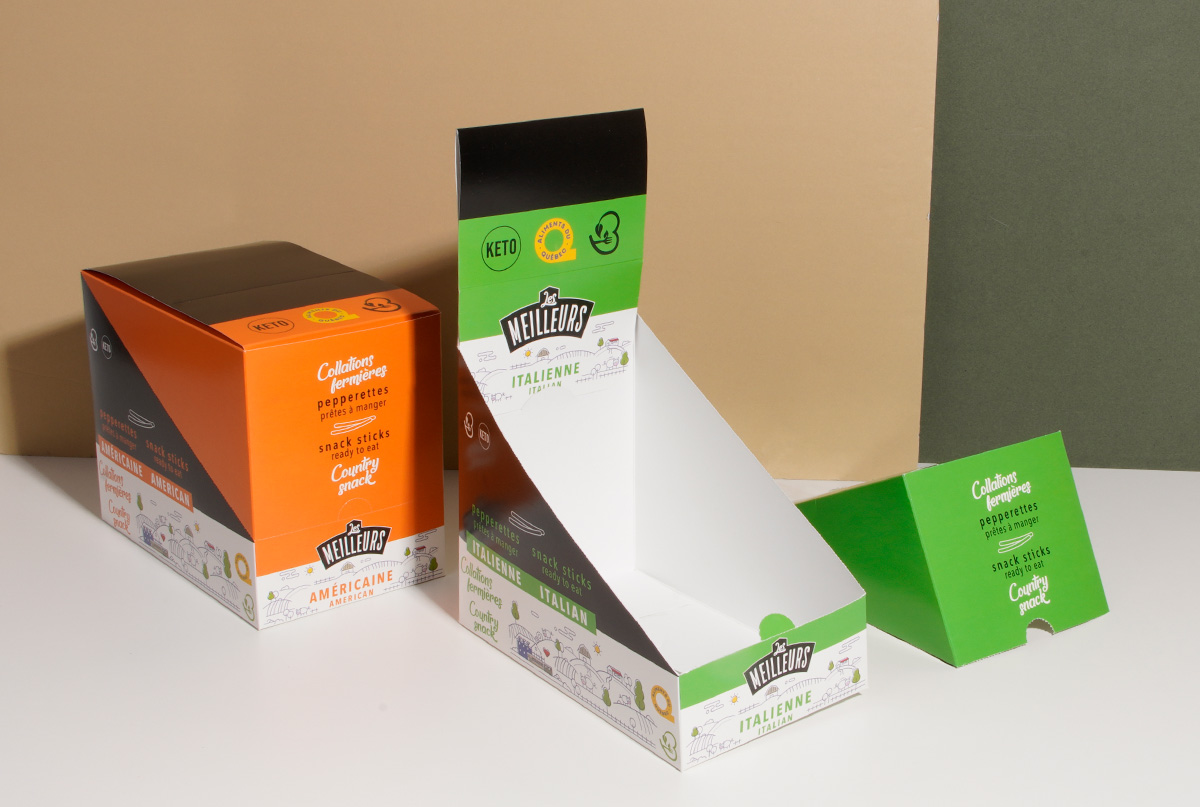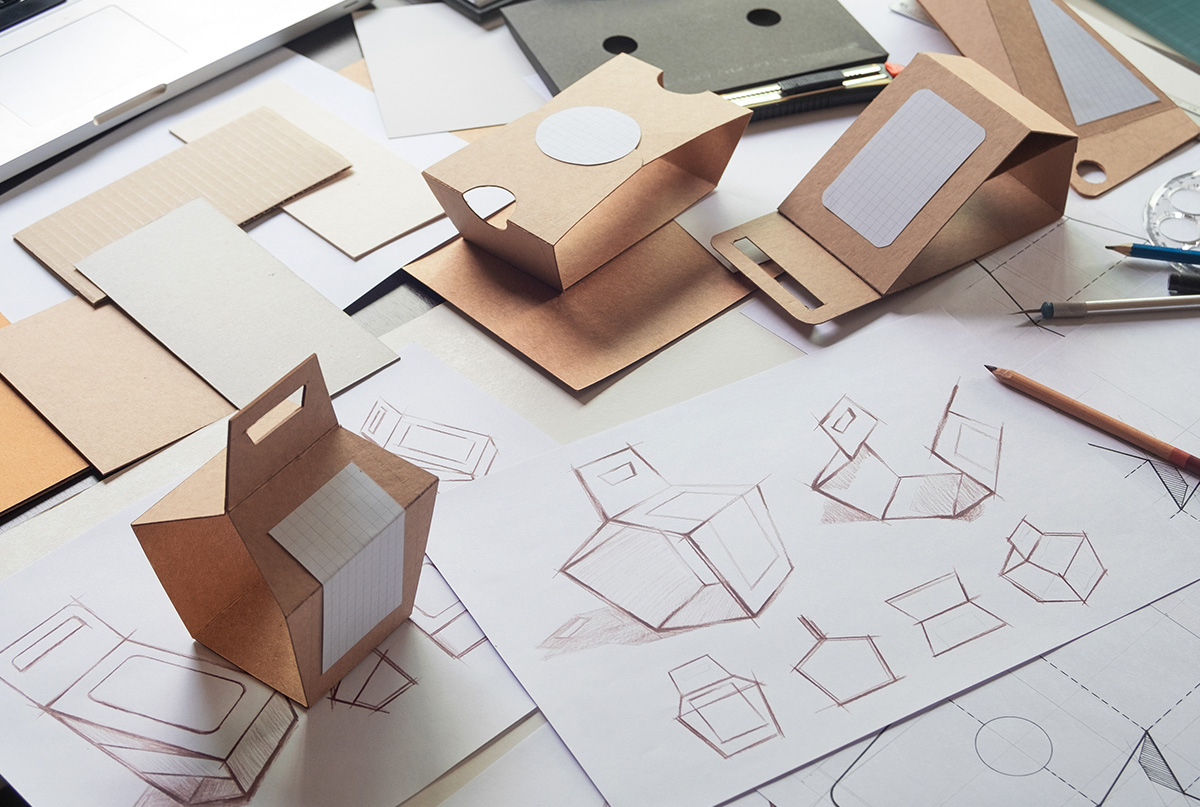As you consider your packaging design, you will likely want to think about ways to upgrade it. Foil stamping is just one of several methods of enhancing your product packaging, but what is this technique, and what does it include?
How Foil Stamping Works
Foil stamping, also called hot stamping, involves foil, metal dies, pressure, and heat. While metallic foil such as silver, copper, gold, or holographic metals is most common, you can also find a variety of matte or glossy finishes.
The process uses heat and pressure to apply a layer of foil onto the product packaging, with your choice of foil determining the color of the stamping.
To start, you create a leafing or foil die. Your product packaging manufacturer will let you know what format this file needs to be in. Once the die is created, you are ready to foil stamp your product packaging.
The manufacturer etches the design onto the die or onto a copper plate. They then place the foil on top of the product packaging. They turn on a heating element and press the plate or die onto the paper. This process bonds the foil to the area of the product packaging underneath it. Any excess foil gets discarded.
The above process is repeated for every color or type of foil that you want to include on your product packaging. Afterward, there is a quality check to ensure everything was stamped properly.
Types of Foil Stamping
While the process of foil stamping is nearly identical, there are a few slight variations depending on your goals.
Flat Foil Stamping
This is the simplest and most affordable process. The stamped foil design raises slightly off the surface. This process uses magnesium or copper stamps.
Peripheral Foil Stamping
In this process, you use foil heat transfers on the outer perimeter of your product across its full circumference.
Sculpted Foil Stamping
This process uses brass dies to create an image that looks more carved and defined, thanks to being higher than the surface.
Vertical Foil Stamping
Use this process for foil stamping on cylindrical areas or flat substrates.
A Closer Look at the Foil
In most cases, the foil used in foil stamping will have several layers. There will be a clear film with a layer of pigment on top. From there, there is a layer of pigmented sediments and another featuring a heat-activated adhesive.
As mentioned, the foil can be:
- Metallic (including gold, silver, copper, green, red, or blue)
- Matte
- Gloss pigment
- Holographic
- Special effects
Those special effects foils can mimic the look of marble, pearl, or leather.
How You Can Use Foil Stamping
Product packaging is a popular place to use foil stamping, especially on cardboard boxes. But you can also use foil stamping on inserts or nearly anything else. Consider it for stationery, labels, certificates, postcards, or anything else you include with your product.
Conclusion
Foil stamping lets you add a thin layer of foil to your product packaging, enhancing its appearance and adding more texture. You can choose from several types of foil, including a range of colors.




